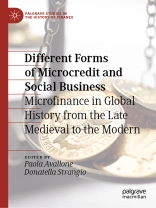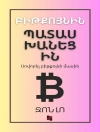This edited collection discusses the evolution of microfinance and social business from the late medieval period to the modern era. The book fills a gap in financial history by exploring lesser-known, informal forms of credit granted to the poorest people, which have often not been recorded in writing.
The book highlights the particularly innovative forms of credit developed in Italy, but also includes global contributions on the presence of microfinance and social business across Europe, Asia, and the Middle East. This book illuminates for different countries and periods forms of financial assistance available for those not deemed as creditworthy – whether through the institution of the Monti di Pietà, an Italian credit instrument of the late Middle Ages, loans granted by shopkeepers, pawnbroking, or mutual aid distributed by lottery or religious institutions. The geographical diversity of the chapters enables comparative analyses to be drawn between different forms of credit and financial systems as they developed over a long period. The research presented offers new perspectives for contemporary microfinance, as well as reconstructing the experience of those living in poverty in a range of social, economic and religious contexts. The book will be of interest to a broad readership, including those working in financial, economic and social history.
Table of Content
Chapter 1. Different Forms of Microcredit and Social Business – Microfinance in Global History from the Late Medieval to the Modern.- Part I. The Microcredit .- Chapter 2. Tanomoshi in 16th Century Kyoto: Some Brief Reflections.- Chapter 3. Microcredit in the Shop in Late Medieval Tuscany: A Credit Centre for the Poor.- Chapter 4. Small Credit and the Financial Revolution in England.- Chapter 5. Understanding Ottoman Microcredit Mechanism: The Case of Cash Waqfs.- Chapter 6. Between Conflict and Negotiation: The Loan on Pawn in the Kingdom of Naples: Birth, Evolution and Establishment.- Chapter 7. Shopkeepers and Credit Allocation: Consumption Credit in an Old Regime Economy (Buenos Aires, 17th to 19th Centuries).- Part II. The Monte di Pietà.- Chapter 8. Moneylending in the Principalities of Wallachia and Moldavia: Microcredit Between Monasteries, Solidarity Groups, and Moneylenders.- Chapter 9. Two German Monti di Pietà – Microcredit in Early Modern Augsburg and Nuremberg.- Chapter 10. The Summer of 1903 and the Battle Over Small Loans Between the Monte di Pietà and Private Banks.- Chapter 11. Institution and practices of social assistant: Monte di Pietà of Rome.- Part III. Microfinance.- Chapter 12. Endowed Charities: The Microfinance System Used by Charitable Institutions in Catalonia (18th century).- Chapter 13. Credit, Solidarity Networks and the Rural Poor in Pre-Industrial France.- Chapter 14. Making way for the Sparkasse – Institutions of Transition Between Personal and Organisational Credit in 19th Century Germany.- Chapter 15. Integrating Micro-finance and Philanthropy Through the Sandouq: Lessons Learnt from Jabal al-Hoss.- Conclusions.
About the author
Paola Avallone is Director of Research at the Italian National Research Council, Institute of History on the Mediterranean Europe. Her research specializes in the economic history of Southern Italy between the 16th and 19th centuries with particular attention to the banks, insurance, local institutions, and mobility of people and goods.
Donatella Strangio is Full Professor of Economic History and Director of the MEMOTEF Department at Sapienza University of Rome, Italy. She is the author of numerous books and articles in national and international journals, focusing on economic and financial history. In 2022, she published the book The Roman Stock Exchange between the 19th and 20th Centuries: A History of the Italian Stock Market in the Palgrave Studies in the History of Finance series.












